I took last week off to take a real vacation (my computer stayed home!) to Iceland, with my friend and colleague Eve Bodeux and our mutual friend Ann. We had an amazing time; I had changed planes in the Reykjavik airport many times, but I had never done the Icelandair free stopover, much less taken a real trip to Iceland. Eve suggested Iceland as a destination, Ann suggested renting an RV, and we booked it! By buying the tickets about six months in advance, we paid only ~US $600 each (less than I paid for my daughter to fly from New Jersey to Colorado for winter break!!), so although Iceland itself isn’t the cheapest travel destination, it was an affordable trip overall.
Day one: Arrival, Blue Lagoon, and Thingvellir
We flew nonstop (overnight) from Denver to Reykjavik, arrived at about 6 AM and killed some time drinking coffee in the airport while we waited for the RV rental place to open. We booked an RV through Geysir, and overall we were happy with it. RVs in Iceland tend to be on the older side and ours was no exception, but we were really happy that we had an RV versus staying in hotels and eating in restaurants.
In terms of Icelandic tourist infrastructure, basically there’s the greater Reykjavik area (tons of restaurants, hotels, and tourist services), and then everything else (where the supply of hotels and restaurants drops off precipitously, and some fairly large towns have very few services). Renting an RV allowed us to avoid spending time chasing after places to stay and eat, which was a big win.
After we picked up the RV, we headed straight to the Blue Lagoon; a geothermal hot spring that is a classic on the Golden Circle tourist trail but/and was also really incredible! We did the basic (Comfort) ticket which was totally sufficient (you get a towel and a drink), and it was really amazing to float in the ice-blue steaming water after being on the plane all night. Call me easy to impress, but I honestly didn’t expect the Blue Lagoon to be that blue; it’s really blue! When we were there, it was not unpleasantly crowded; I was actually expecting it to be more crowded.
After a couple of hours of soaking, we drove to Thingvellir National Park, a historic site where the Icelandic Parliament met, starting in 930 AD. There’s a nice hike through the park, where you can also see lots of the tectonic plate activity that Iceland is famous for. Admission is free and we spent a couple of hours tramping around. We then headed to the campground by the Faxi waterfall which was very pretty, uncrowded, and had an electric hookup for our camper, plus clean bathrooms and a place to wash dishes. It had been drizzly all day but only started pouring after we were at the campsite!
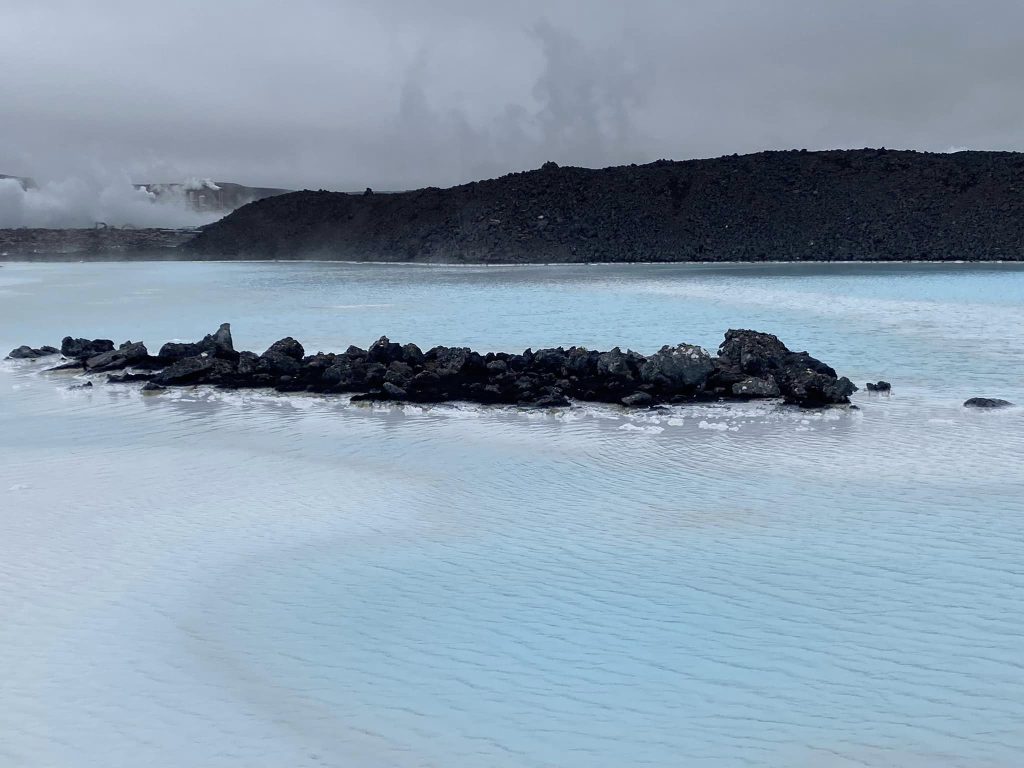
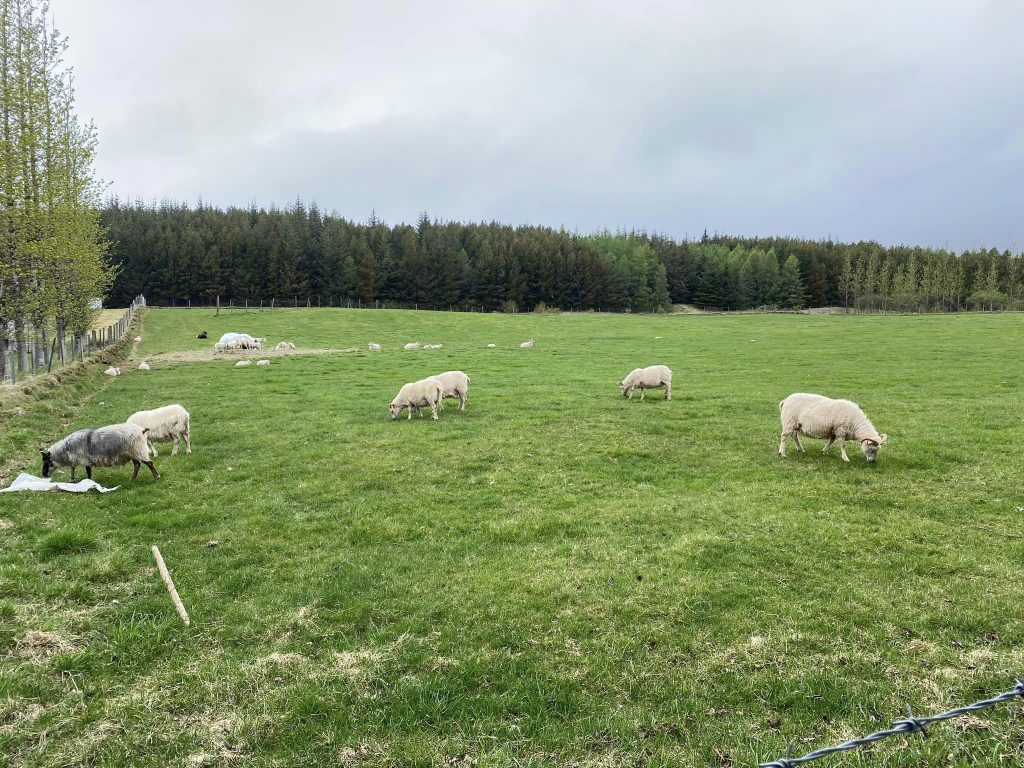
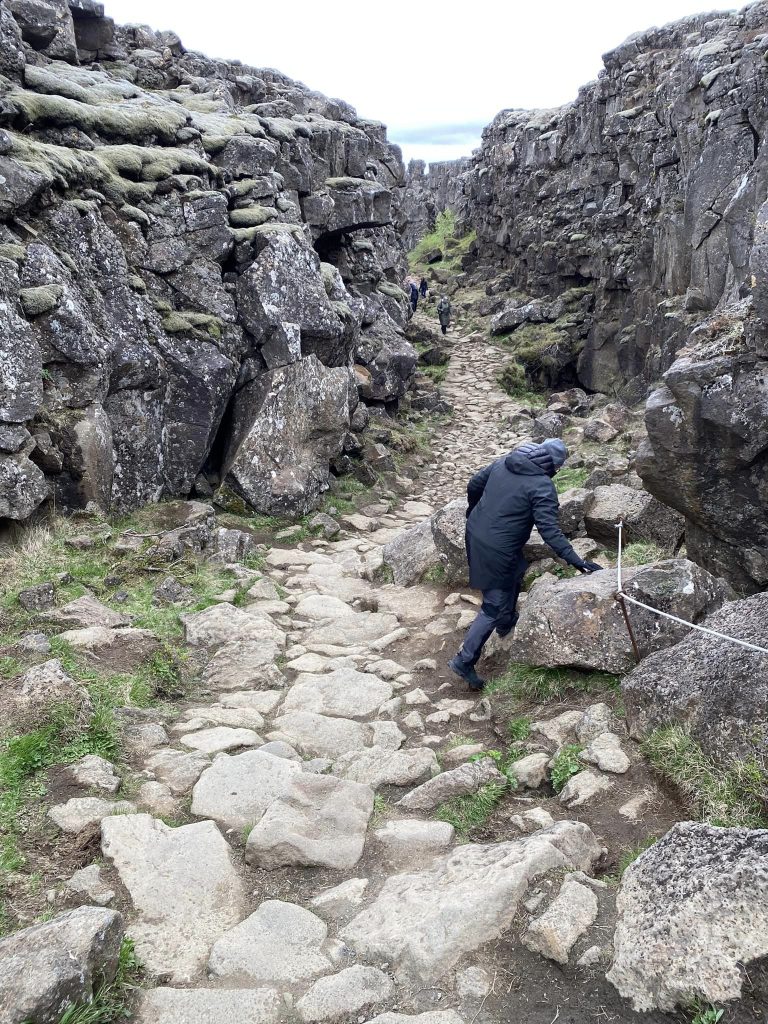
Day two: The rest of the Golden Circle
On day two, we went to the Geysir geothermal area and the Gullfoss waterfall, both very impressive! As expected, there were more tour bus crowds here, but at Geysir we hiked to the upper observation area where you can watch the Strokkur geyser erupt (very cool!), and then we ate lunch in the Geysir restaurant which was very tasty. You get pretty wet on the observation decks at Gullfoss, so we then warmed up at the Secret Lagoon hot springs, which are smaller but more rustic than the Blue Lagoon. There’s a nice changing room with lockers, and the pool itself is very peaceful and beautiful. We then drove down to the coast village of Vik (vik=bay; Reykjavik=smoky bay) where we got a campsite at Vik Campsite. The campground is right near the center of town, and (as with most campgrounds we stayed in) was around US $40 for three people and an electric hookup. Vik is a cute town right on the water, with a nice cafe and restaurant in the shopping plaza with the supermarket.
Day three: Black sand beaches and glacier lagoon
After camping in Vik, we headed to the famous black sand beaches; it’s worth doing this area from two different directions. From the shopping plaza in Vik, you can walk down to the long black sand beach that also has a jetty that you can scramble to the end of. The beach was pretty deserted when we were there (it was sunny but very windy) so we had it pretty much to ourselves to explore. We then drove back toward Reykjavik for about 10 minutes to the Reynisfjara beach side, where you can get right up to the iconic rock formations (basalt) that are in all of the black sand beach tourist photos. The Reynisfjara side is smaller and much more crowded, so we were glad we did both angles! We then drove to the Jokulsarlon glacier lagoon, (more on that below) which was beyond stunning. The closest camping to Jokulsarlon is in the national park in Skaftafell (about 45 minutes back toward Vik), so we drove back there and staked out a campsite at the very nice campground (geothermal hot showers, nice place to wash dishes, several nice hikes right from the campground).
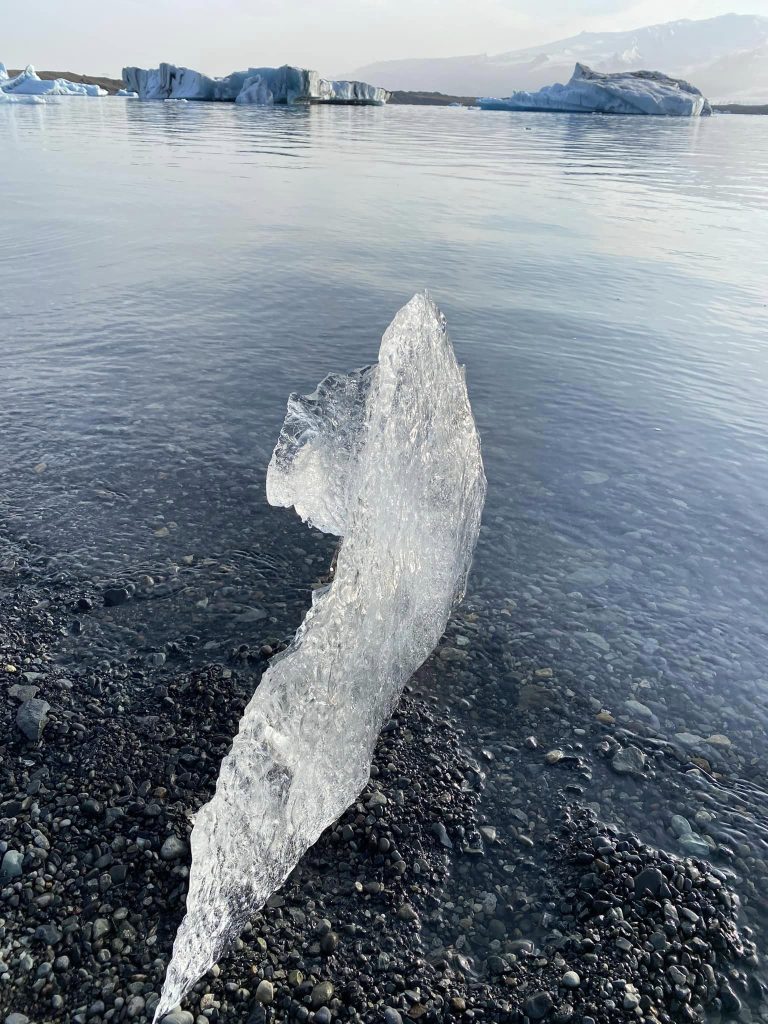
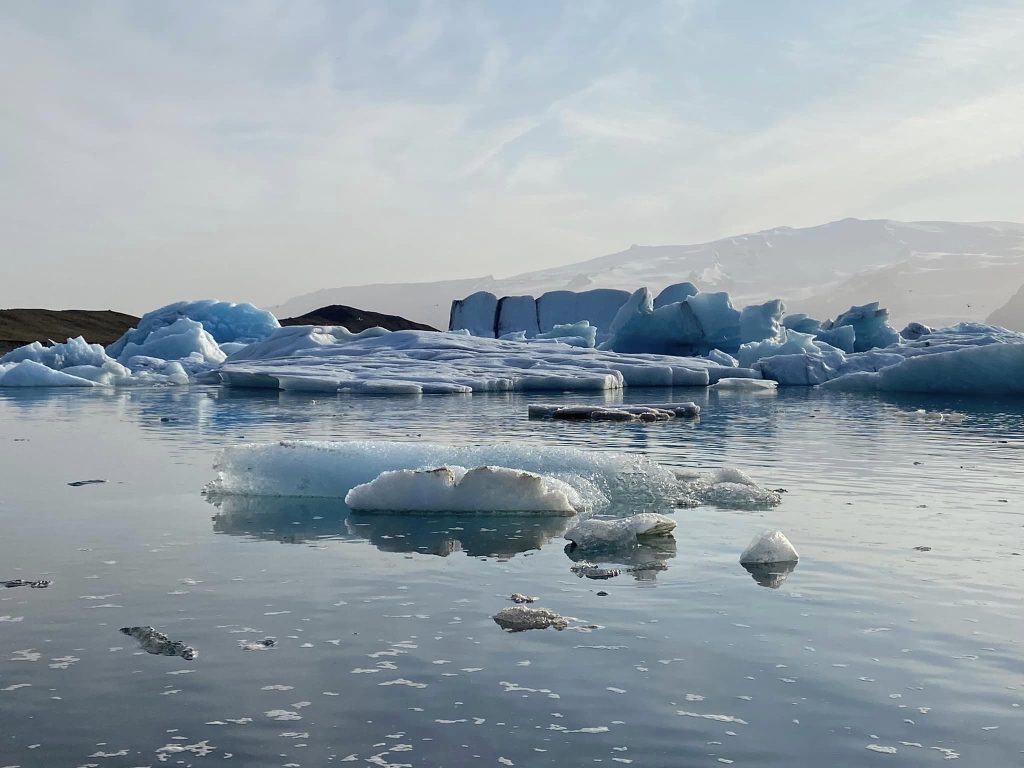
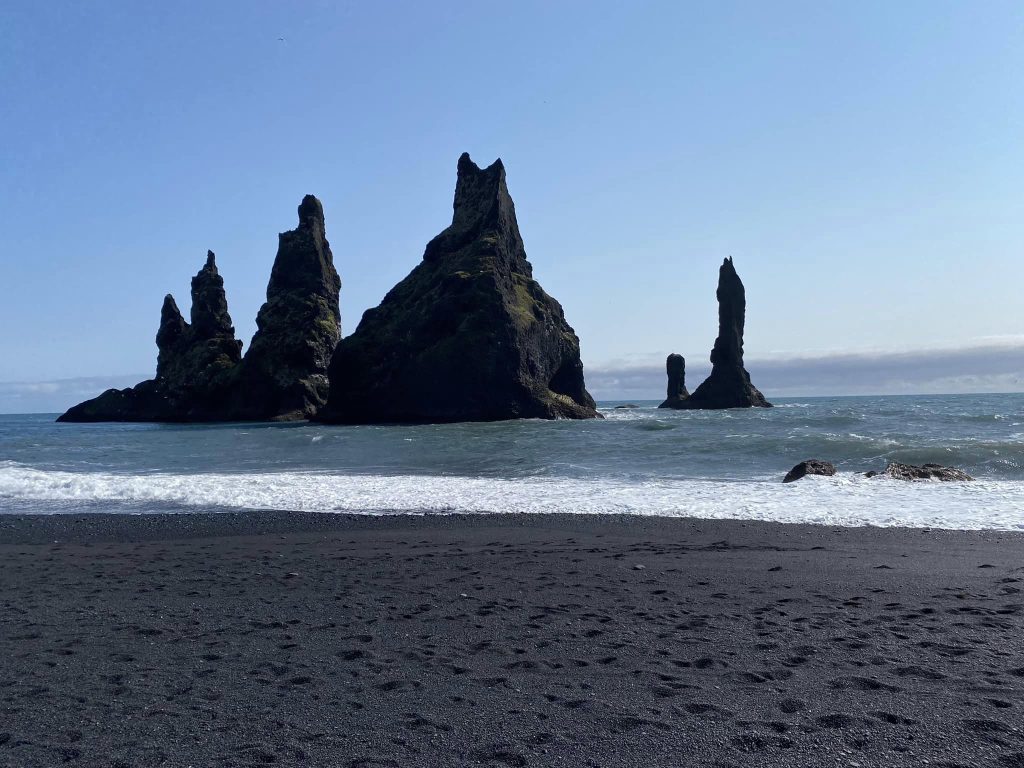
Day four: Glacier kayaking and a waterfall hike
The highlight of day four (and one of the highlights of the trip in general) was kayaking in the Jokulsarlon glacier lagoon. The lagoon itself is full of icebergs that calve off the nearby glacier, and it’s truly one of those things that you have to see in order to absorb how unique and gorgeous it is. We booked this tour (there’s only one company that does it) several months ago, which turned out to be a good idea because the guide told us they were booked through August as of June 1.
The kayaking is in a group of about 10 people, the outfitter provides protective clothing (rain top and rain pants that you wear over your own clothes, plus rubber boots), and then you go out on the lagoon in sit-on-top kayaks (mostly doubles but also some singles) for about an hour. Our guide grew up in the area near the lagoon and was really great, telling us about the glacier environment and how the icebergs move through the lagoon. There are tons of seals in the lagoon (we all agreed that whales would be even cooler!!) and we were lucky enough to see one lounging on a floating iceberg. This was truly a bucket list experience; highly recommended!
After kayaking, we went across the road to Diamond Beach (where the icebergs eventually wash up as they head out to sea), and then took a really nice waterfall hike from the campground.
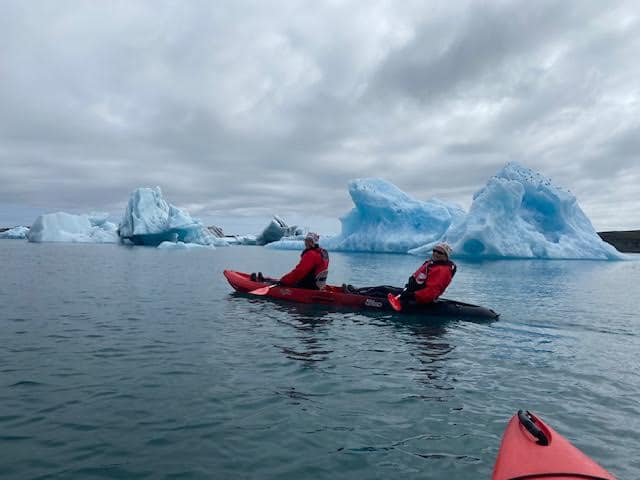
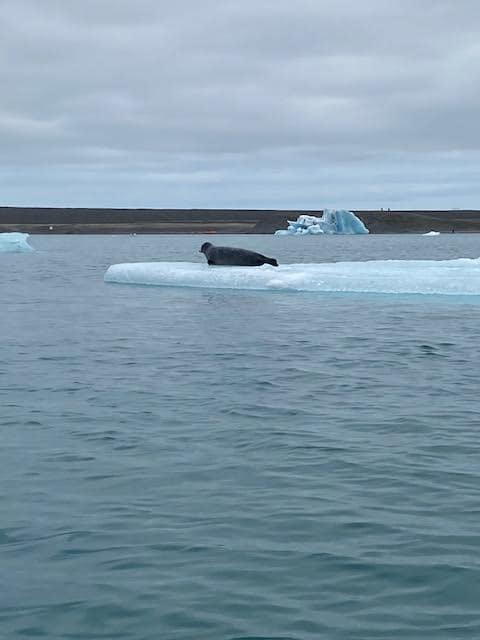
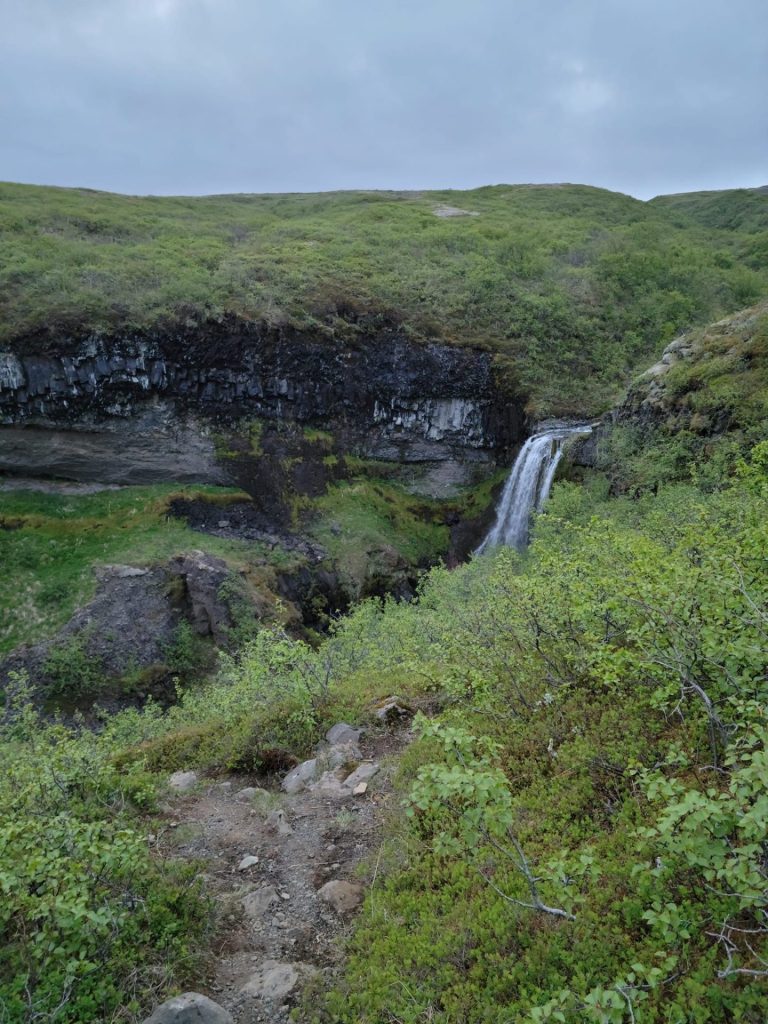
Day five: Puffin tour
I’m not that much of a bird person and had no idea that puffins lived in Iceland, but it turns out that there are numerous puffin colonies on the southern coast. One of our original ideas for the trip had been to drive the entire ring road, but between the cost of gas (~US $10 a gallon) and the amount of driving versus doing fun stuff, we changed plans and decided to do a puffin tour. This very cool tour started with being pulled in a wagon behind a tractor across the volcanic tidal flats, to the headland where the first settlers of Iceland landed in 874. We then hiked out to three different puffin colonies (they’re totally unbothered by people and live in burrows up to five feet deep!), and also saw skua (huge brown predatory gulls), and a herd of free-ranging sheep. All of us really loved this tour! Afterward, we headed back to Vik, where we took a dip in the hot tub at the public swimming pool and then camped at the in-town campground.
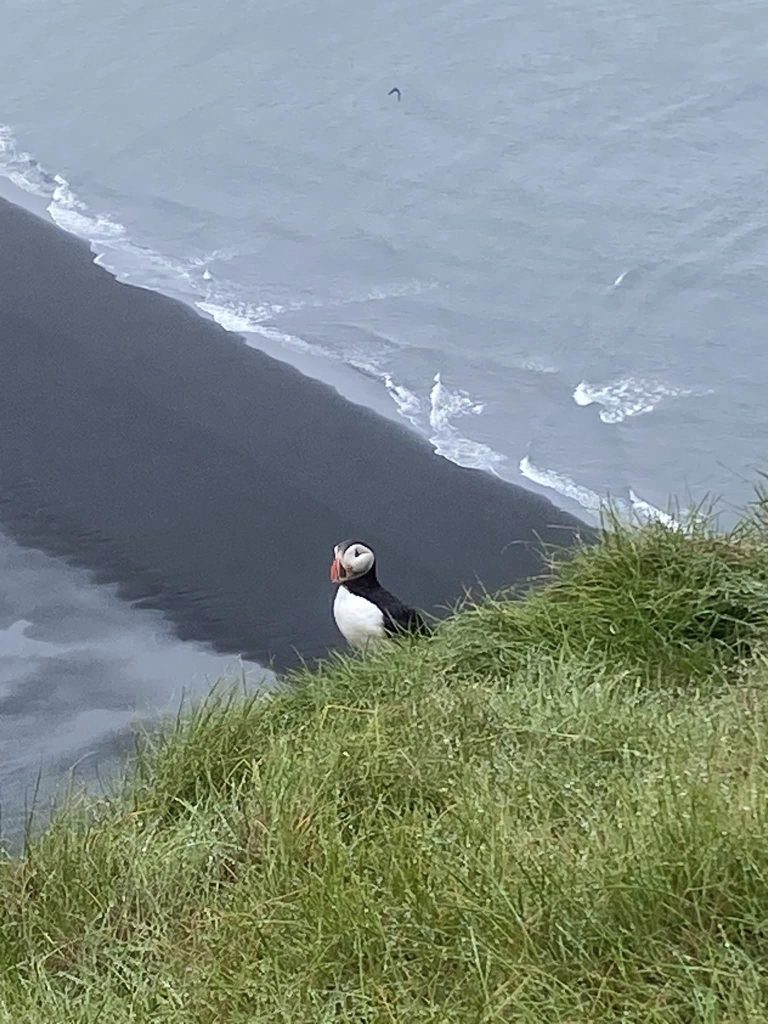
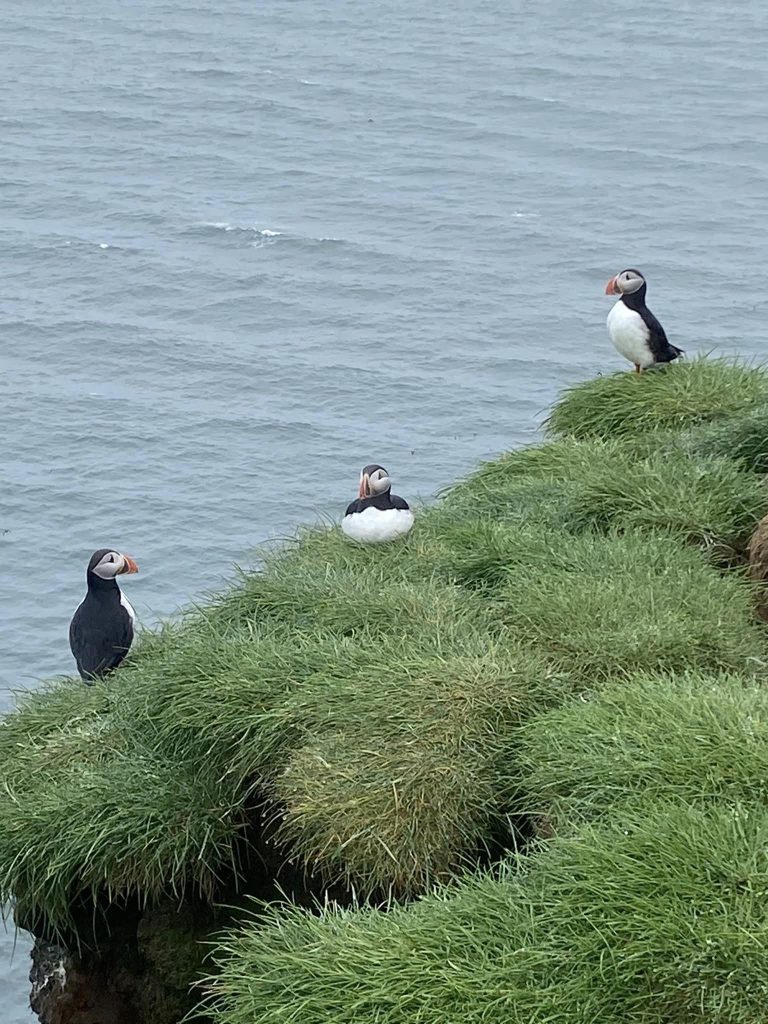
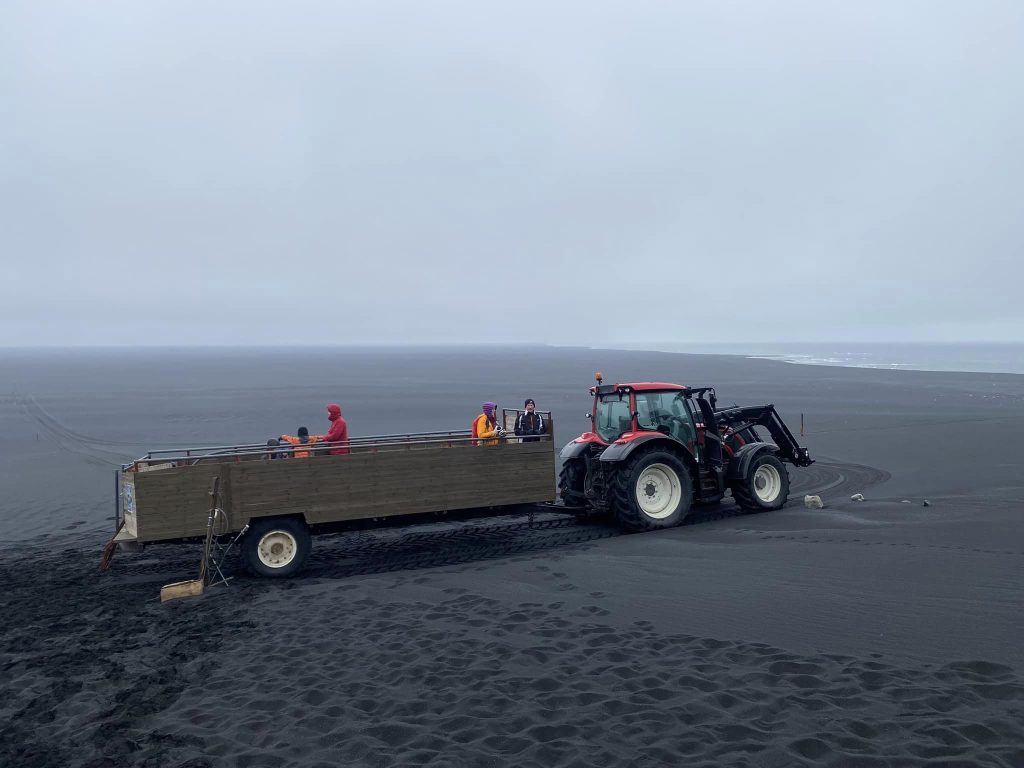
Day six: Waterfalls!
On day six, we visited two huge waterfalls between Vik and Reykjavik on the southern coast: Kvernufoss (totally cool, you can walk behind it) and Skogafoss, and then headed back to Reykjavik. We capped off the day with a sunset (not that the sun really sets, but it does dip toward the horizon) visit to the Sky Lagoon, a geothermal infinity pool on a point in Reykjavik harbor, where we did the “7-step purification ritual,” including baking in a glass-walled sauna looking out over the ocean. The Sky Lagoon is pretty new, and it’s a very impressive facility, also less expensive than the Blue Lagoon.
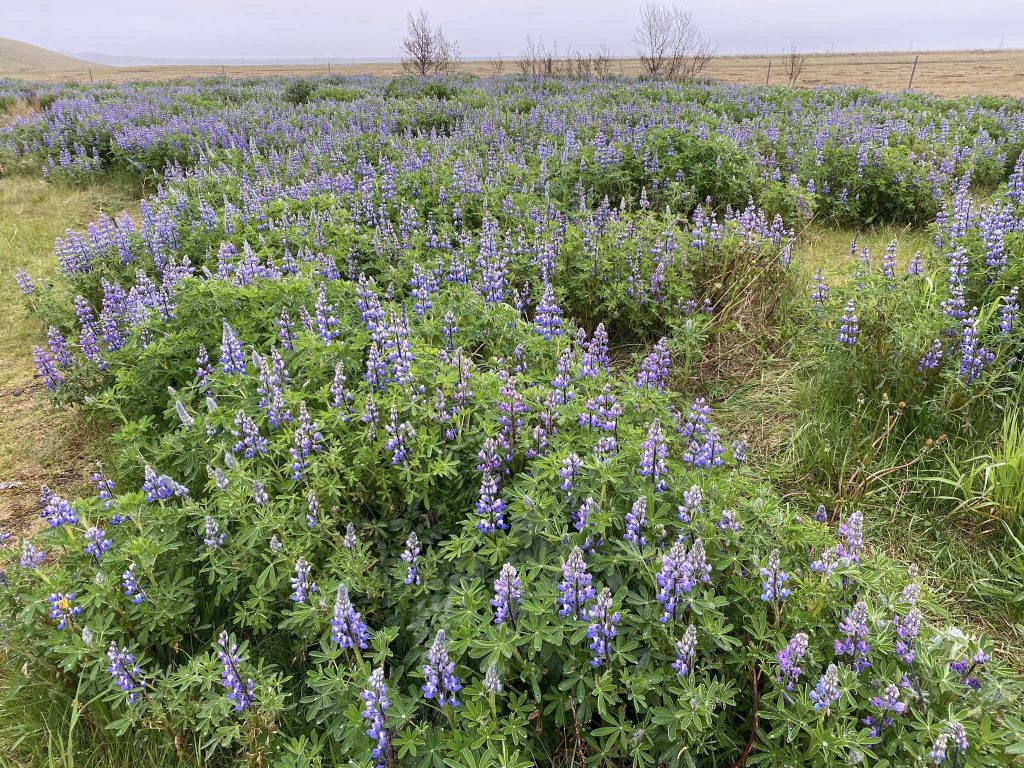
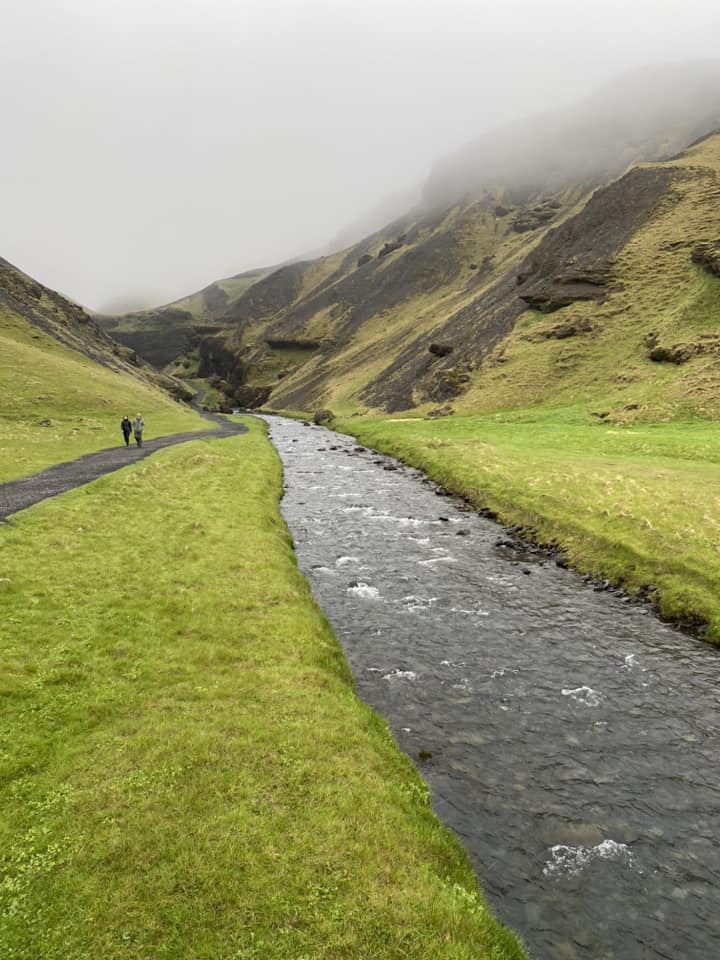
Day seven: Reykjavik
We spent our last night at Reykjavik Campsite, a nice campground right in the city (next to the soccer stadium) which also has nice facilities: large bathrooms, a place to wash dishes, an indoor area to cook and eat if you’re in a tent, shelves to swap food and clothing, etc.
The next morning, we toured around Reykjavik (if you’re in an RV, we recommend the parking lot at the large public hospital near the main church downtown, it’s not expensive and is much easier to navigate than street parking). We had great weather and it was fun to just walk around and check out the city. Reykjavik isn’t huge; unless you’re really into shopping or you go to a museum, you can see the main sights in a couple of hours. We visited a great bakery and then had lunch at the food hall in the old post office, then returned the RV and went to the airport after a truly perfect trip!
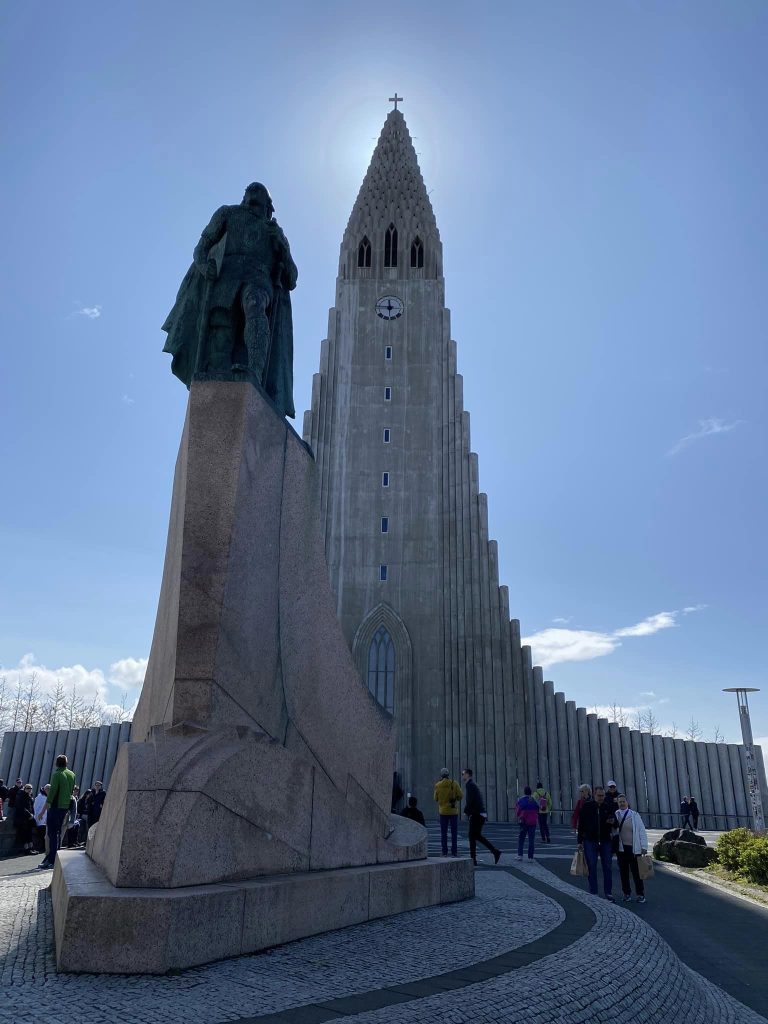
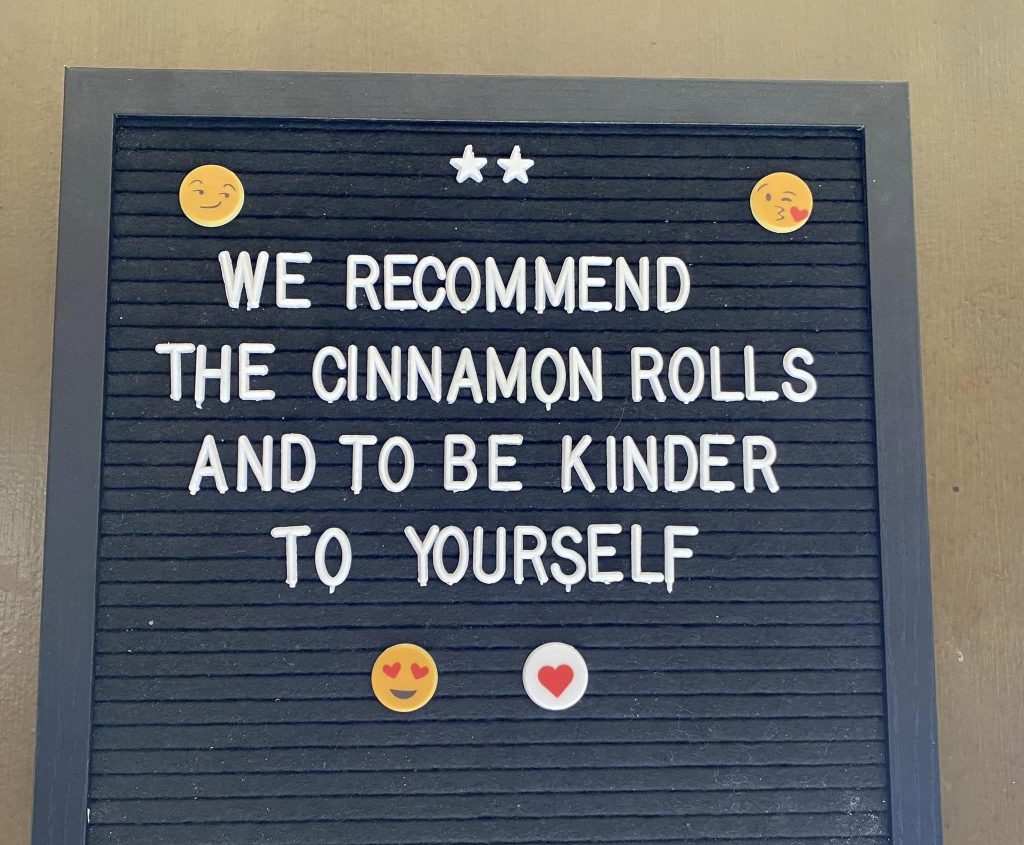
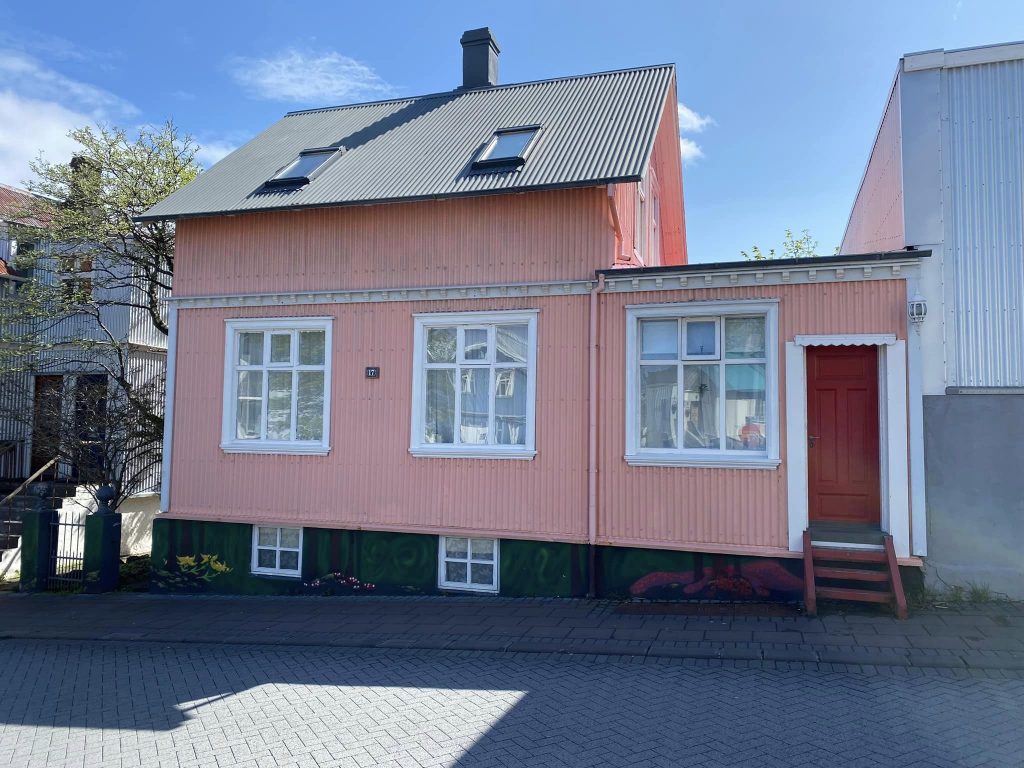
Observations on travel in Iceland (in no particular order)
Ease of travel: At least in the areas we visited, Iceland is a very easy place to travel. Everyone we encountered spoke some English, roads are easy to navigate, drivers are courteous and the speed limits are low (maximum 90 km/h) so the driving is not stressful, although you do need to either rent a vehicle or go with a tour; there’s really no public transportation between towns.
Vehicles: Most vehicles in Iceland are manual transmission/stick shift. In fact we were not able to find any RVs that were automatic transmission, so if you can’t drive a stick shift, make sure to get a confirmation in writing from the rental company that you’ll get an automatic.
Costs: Not surprisingly (since everything is imported), Iceland is an expensive destination. We didn’t stay in any hotels, but food was probably about 50% more expensive than in the US. Our rule of thumb was that basically any lunch item in a cafe or restaurant (veggie burger, pasta dish, soup and bread) was about US $20.
Campgrounds: We had a very positive experience RV camping in Iceland. Every campground we stayed at was very clean (almost obsessively clean as compared to campgrounds in the US) and well-maintained. None of the campgrounds outside Reykjavik took reservations, which is kind of a plus/minus. It was nice to have a flexible itinerary, but once you arrive at the campground, there is no way to stake out a spot without leaving your vehicle there, so if you aren’t occupying your spot, you lose it, and I think that in July and August, campgrounds could be extremely crowded. As compared to US campgrounds, the Icelandic campgrounds also don’t have a lot of (or in some cases, any) amenities. No stores or restaurants (theoretically the Vik campground has a coffee shop, but it was closed when we were there), no place to buy food, and in many cases nowhere to cook or eat inside if you’re tent camping.
Food: Icelandic food isn’t anything super creative or exciting in our experience, but we all felt that the ingredients were very high quality and there were lots of vegetarian/vegan/gluten-free choices. Even in the touristy locations, the food was homemade and very tasty.
Finding places to stay and eat: As I mentioned above, the Icelandic tourist infrastructure (at least by the standards of the US and Western Europe) drops off pretty precipitously once you leave the greater Reykjavik area. Many moderate-sized towns have few or no restaurants or hotels, and even gas stations don’t always have stores associated with them. On the southern coast, Vik has a cafe and a couple of restaurants, but I would definitely not go to Iceland without knowing where you’re going to stay (rent an RV or make hotel reservations well in advance), and even if you have your own place to cook, you need to plan where you’re going to buy food, because many small towns have no supermarkets, or have only a small convenience store. We stocked up whenever we drove by a Kronan (the main large supermarket chain), and we generally cooked breakfast and dinner in the RV and ate at cafes or restaurants for lunch.
Money: Iceland is basically cashless; I can’t even tell you what Icelandic money looks like, because we used no cash at all on our trip. Even small campgrounds, roadside food trucks, etc. have credit card readers, so cash is really not necessary, but make sure that you have a credit card with no international transaction fees.
The Icelandic tourism boom: Everywhere we went, the guides of the activities we did mentioned “the Icelandic tourism boom” of the last decade. During our trip (early June), nothing was unpleasantly crowded, but there were a fair number of people everywhere, and given that high season is July and August, I think that things could get quite packed during that time. The tourist services infrastructure is not huge compared to the number of people who visit Iceland: even during our “shoulder season” visit, many of the parks and recreation areas had long lines for bathrooms, food, etc., so this is something to factor into your travel plans.
Visiting as a stopover or a standalone trip: Icelandair is well known for its free stopover policy, where you can fly between the US and Europe and spend up to seven days in Iceland with no increase in airfare. Eve had done this twice and enjoyed it, but all of us felt that there’s a big advantage to doing a standalone trip, namely that you can take the right clothing and gear for the Icelandic weather. It was in the mid-50s Fahrenheit during our trip, most days a bit misty, some actual rain, a fair bit of wind, and a fair bit of sun. But even when it’s sunny, the sun when you’re that far north is not very powerful, so it’s still fairly cold, I’d say more like our late fall or early spring in Colorado. However, this is manageable if you have the right clothing: we brought fleece jackets and pants, raincoats and rain pants, insulated hats and gloves, and waterproof hiking boots, so we were really never uncomfortable. It’s a lot harder to justify bringing that much stuff if you’re on the way to or from Europe where it’s going to be hot summer weather, so we all really appreciated doing Iceland as its own trip with the right gear.

Corinne McKay (classes@trainingfortranslators.com) is the founder of Training for Translators, and has been a full-time freelancer since 2002. An ATA-certified French to English translator and Colorado court-certified interpreter, she also holds a Master of Conference Interpreting from Glendon College. For more tips and insights, join the Training for Translators mailing list!
Great summary, Corinne! It was indeed a great trip and you capture that here. Where will we go next?! 🙂
Oooh, now that’s a question!!
Perfect timing to read this as I’m planning our family’s trip to Iceland in a few weeks!
I think we have the same itinerary as you ☺️ but we are renting a car and staying in apartments – and as you said, they are very expensive apartments!
I’m going to see if we can squeeze in the puffin tour on our trip. My daughter loves puffins!
Oh, very cool, I hope that works out!!